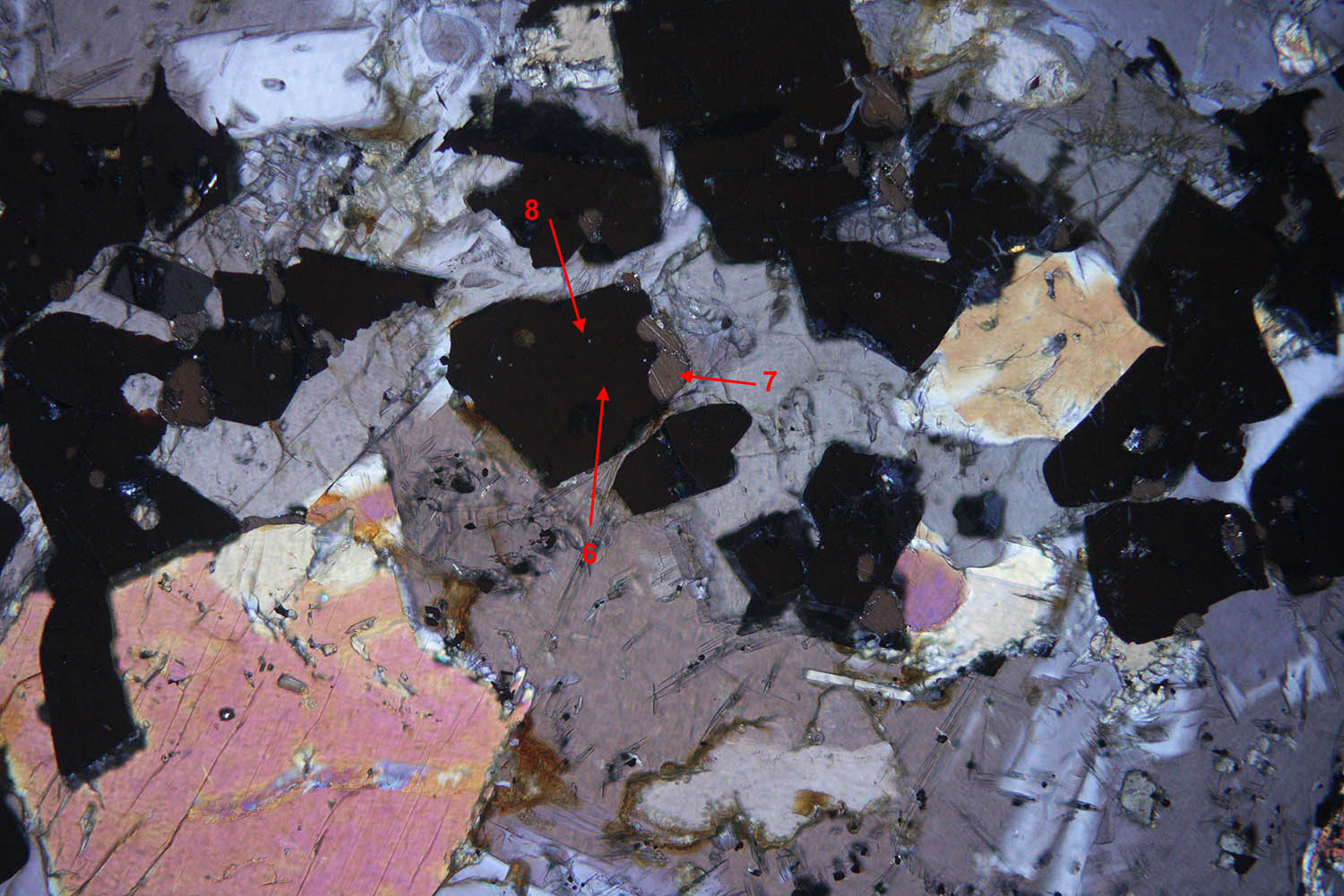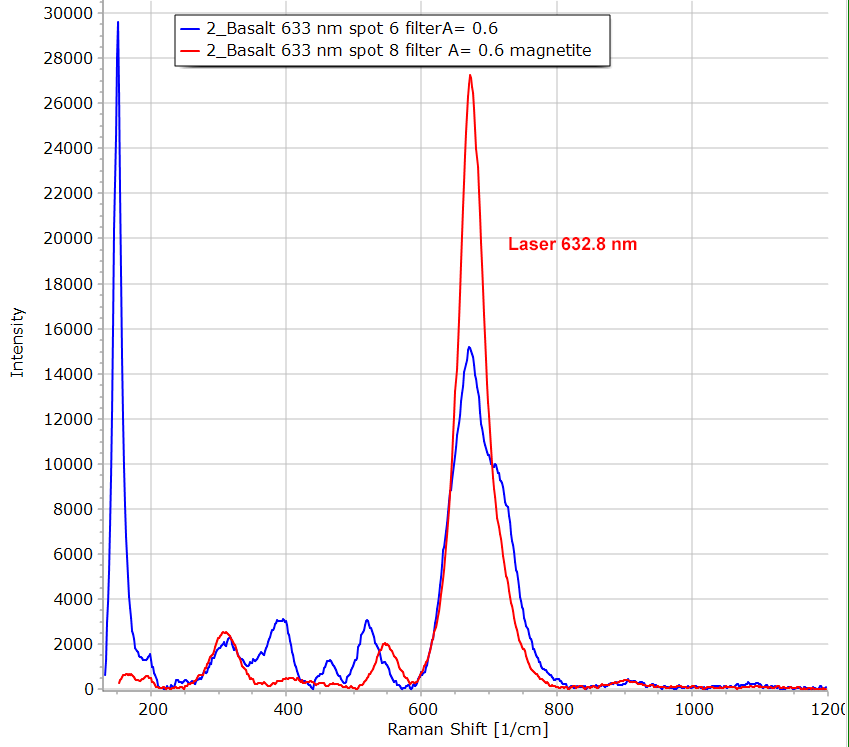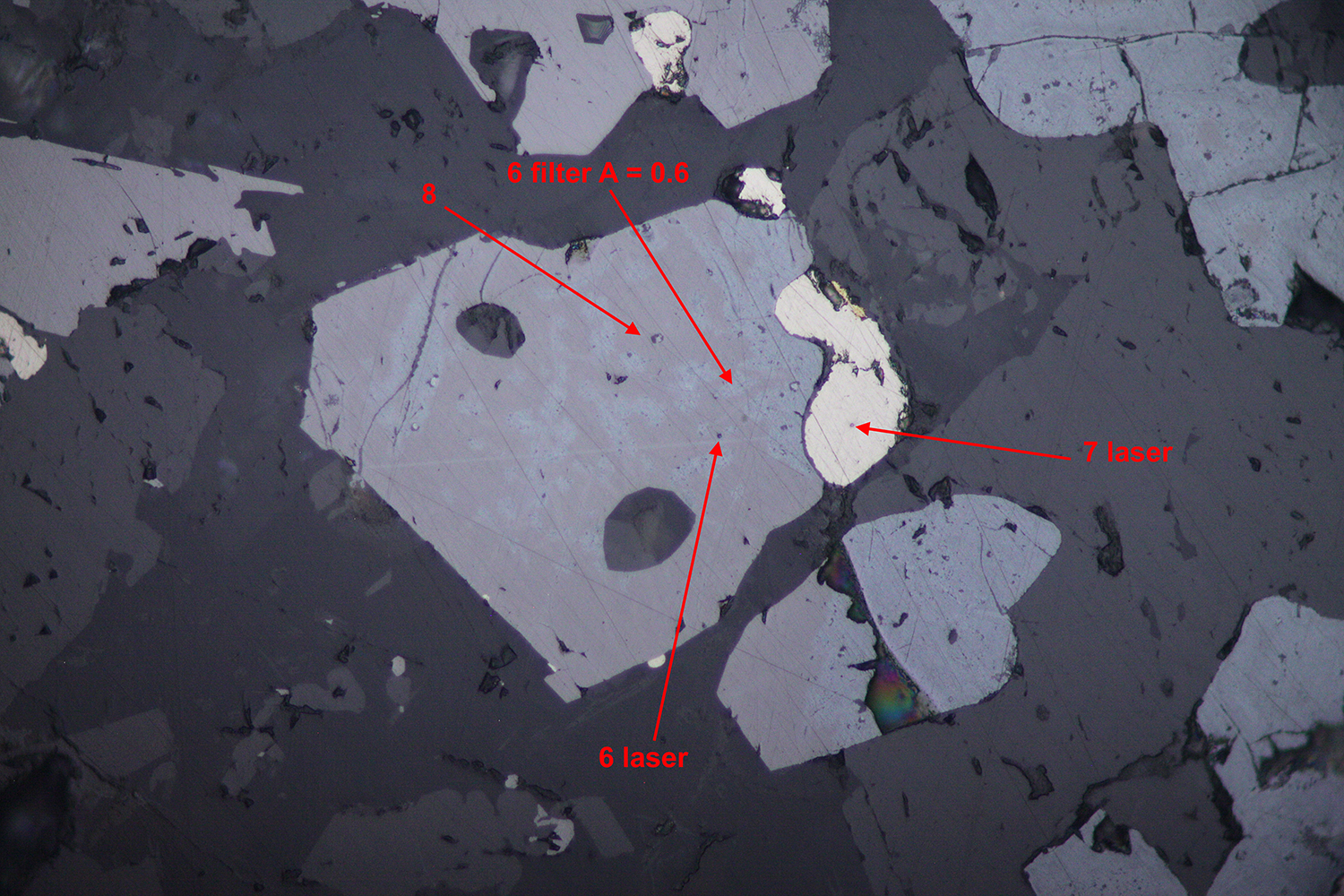Basalt Raman
Wide field thin section of this rock
Basalt thin section area 1.Feldspar plagioclase, augite and glass are the main minerals of this basalt section.
|
|
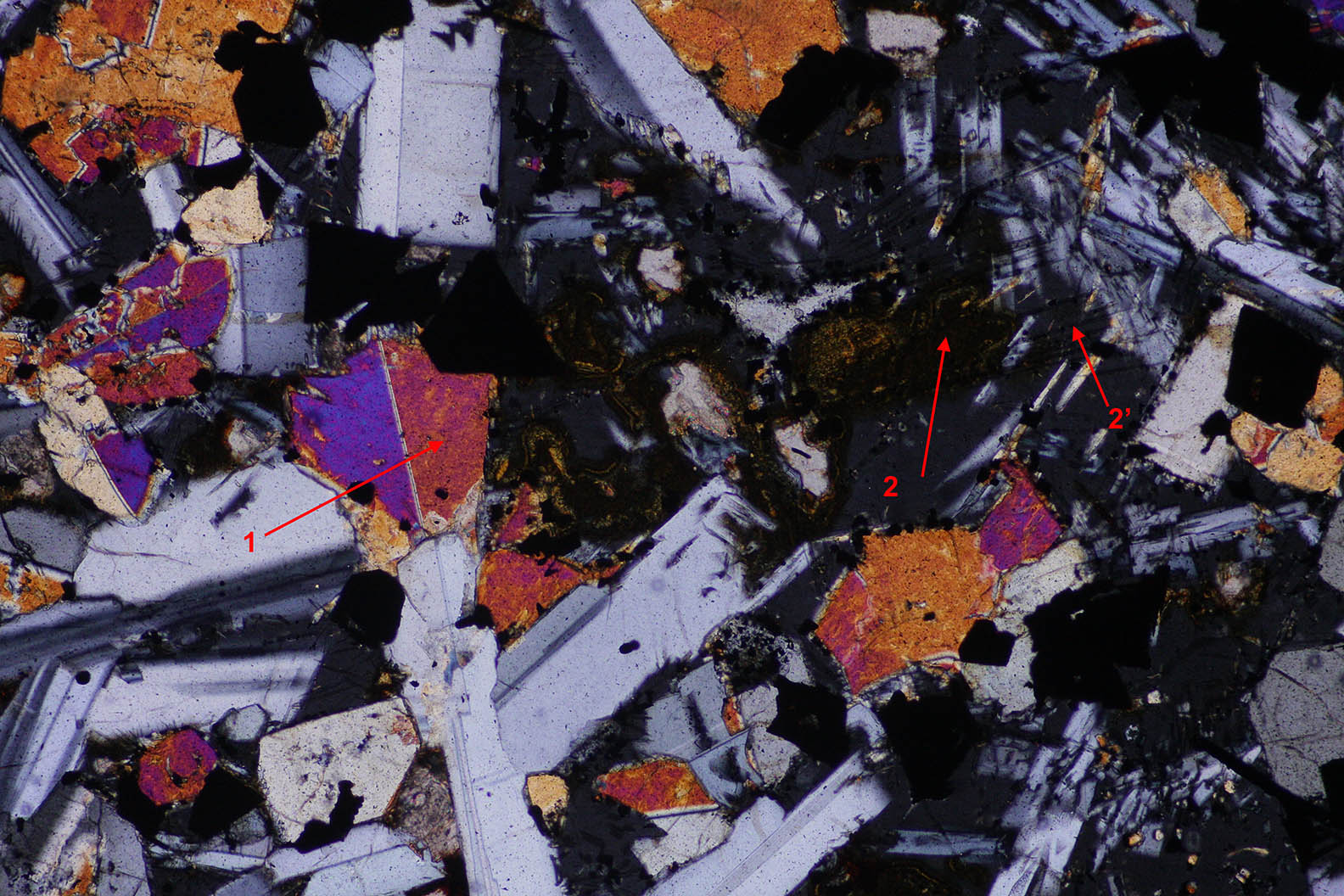 |
|
 |
|
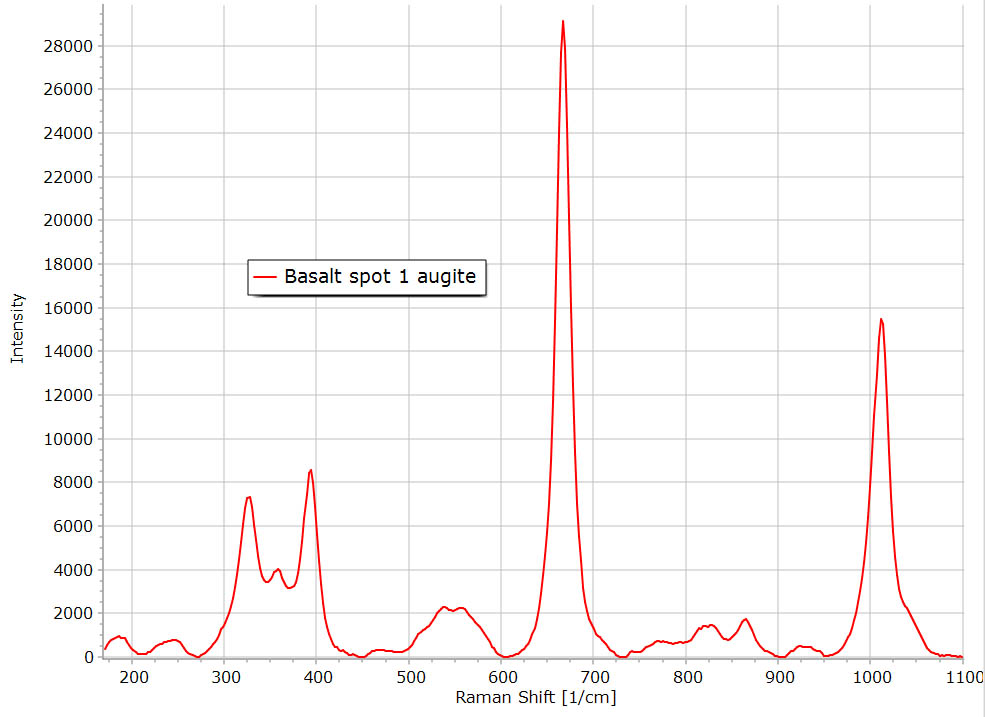 |
Area 1 is a twined
crystal of augite. No good Raman spectra was obtained in area 2 and 2'. 2' is always black in LPA as a lot of areas in this section. It is interpreted as glassy material. |
Basalt areas 3 and 4. |
|
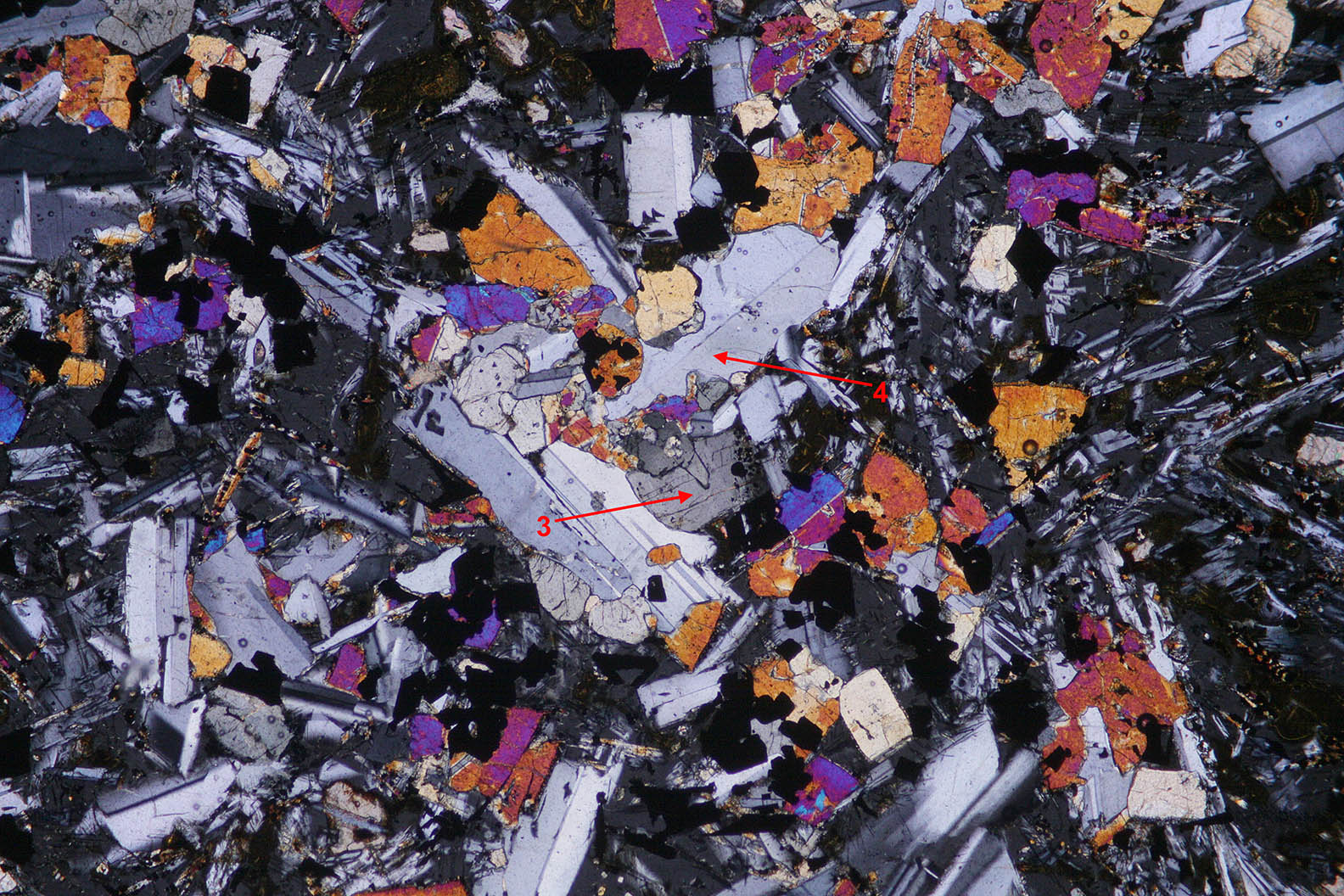 |
|
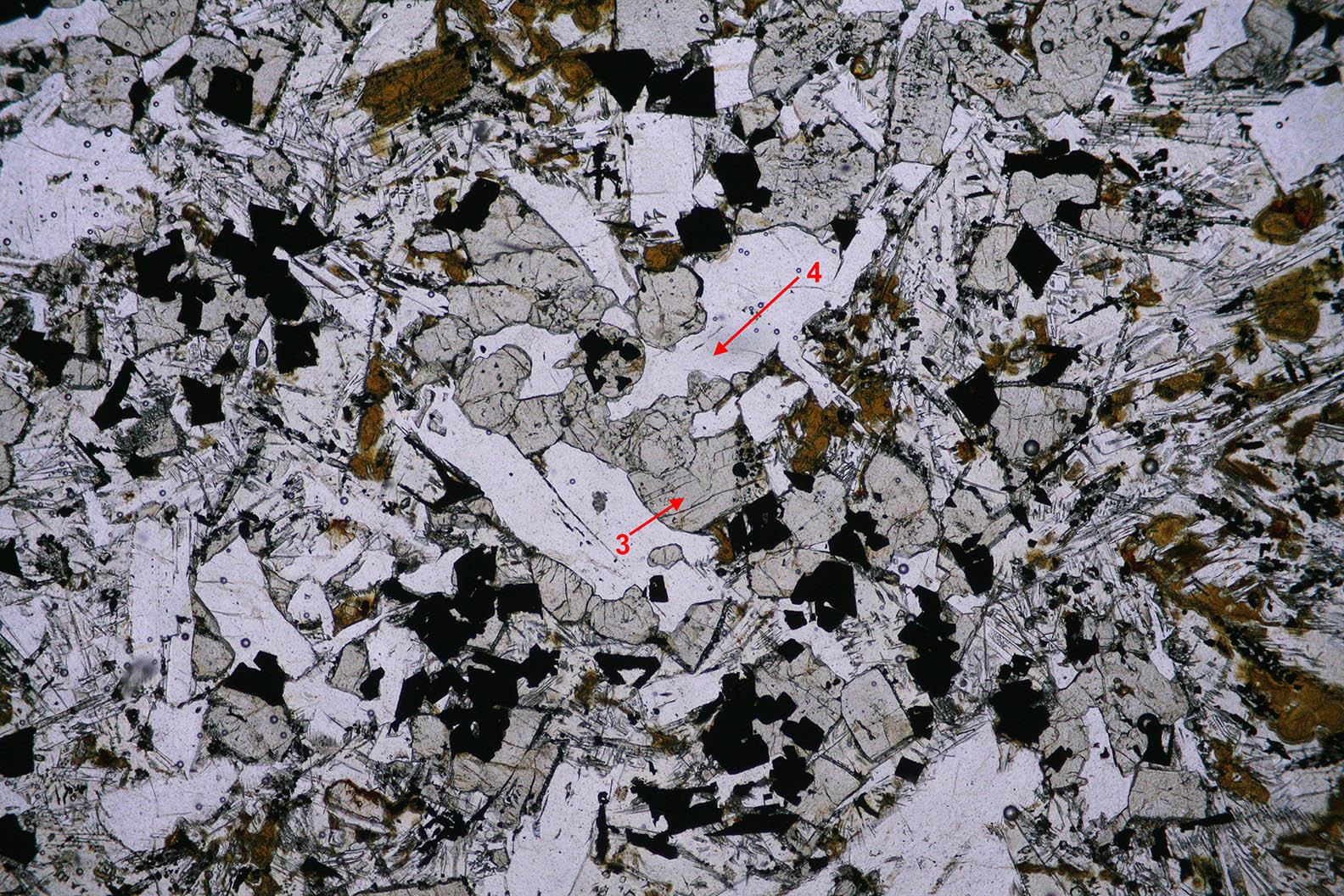 |
|
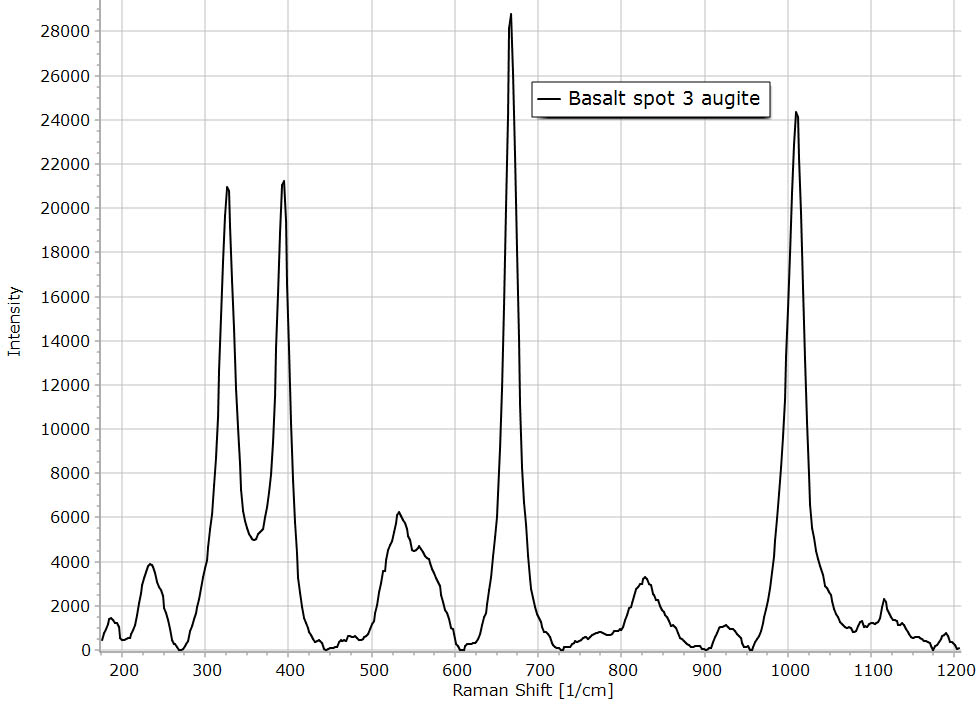 |
The low interference crystal in LPA (area 3) is again augite. |
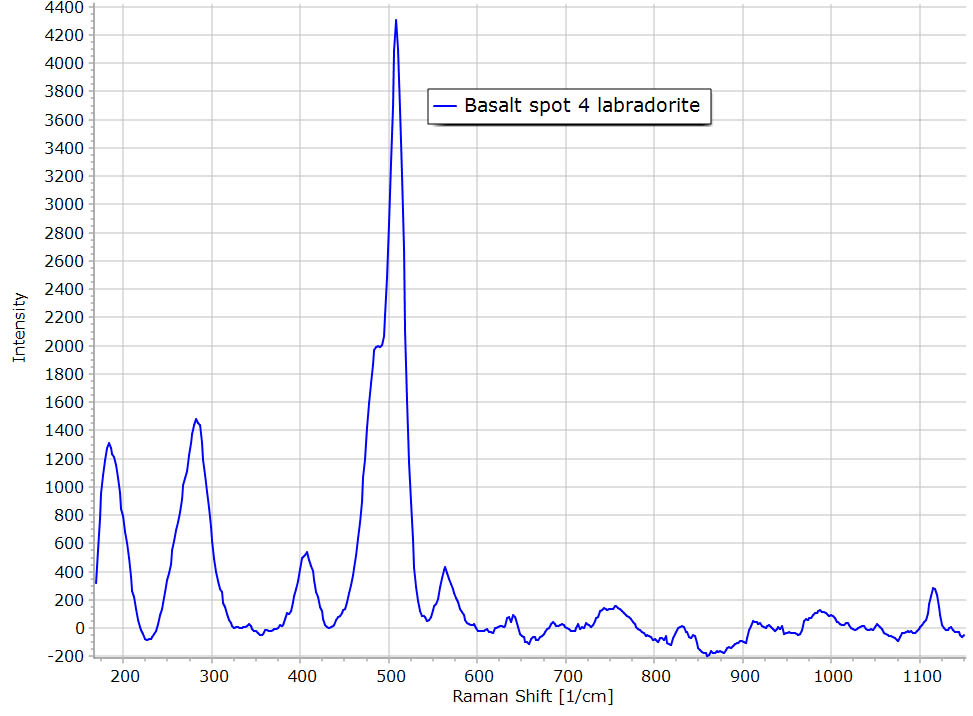 |
The feldspar is the plagioclase labradorite. |
Opaque minerals of the basalt section. |
|
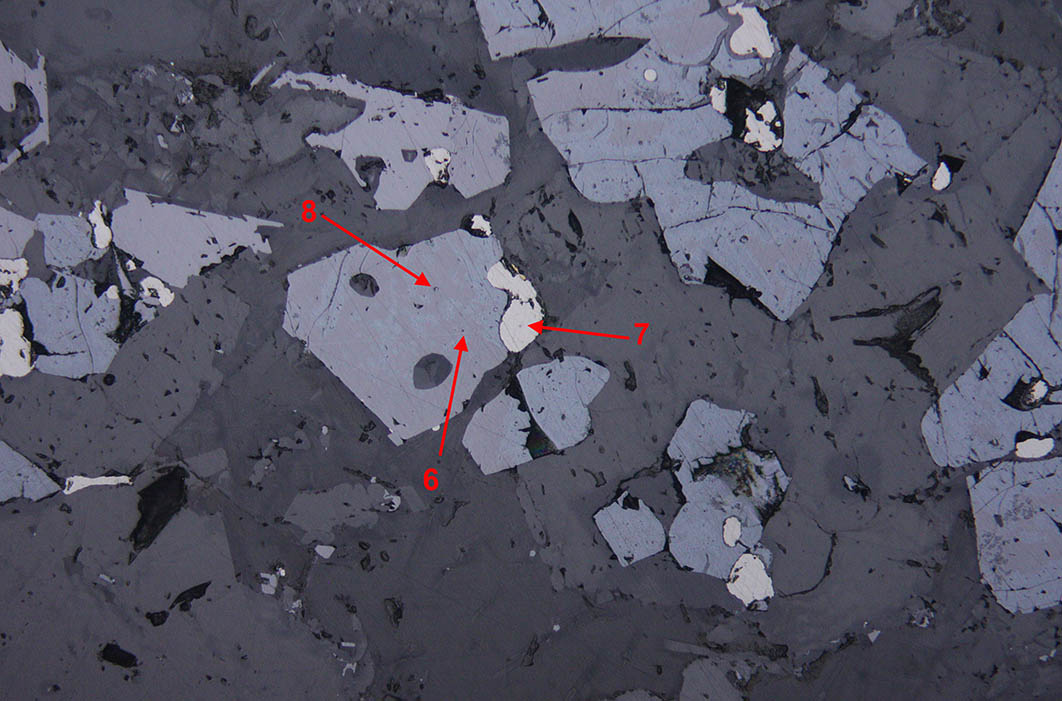 |
Reflection view showing at
least two kinds of opaque minerals which appear bright with this
illumination. One mineral is grey (6 and 8), the other one (7) is yellow
colored. It is possible that areas 6 and 8 contain different materials:
two shades of grey are visible in the crystal. The yellow mineral in area 7 is anisotropic as can be seen in the reflection between crossed polars view below. |
|
|
|
|
|
The red Raman spectrum in
area 8 is magnetite. The region 6 exhibits a more complex spectrum of
magnetite plus an additional component not identified.
The image below is a magnification of the zone. The small dark spots with the indications 7 laser and 6 laser illustrate the impact of the laser on both materials. The spectra obtained with the laser beam not attenuated are not representative of the original materials. The two shades of grey of the crystal in the center of the figure are better distinguished. |
|
|
|
|
|
The yellow crystal in area 7, does not show any Raman spectrum. The oxidized material in the laser beam gives the spectrum on the left, unknown in databases. The color and reflectance of this mineral could indicate the presence of pyrrhotite. |
